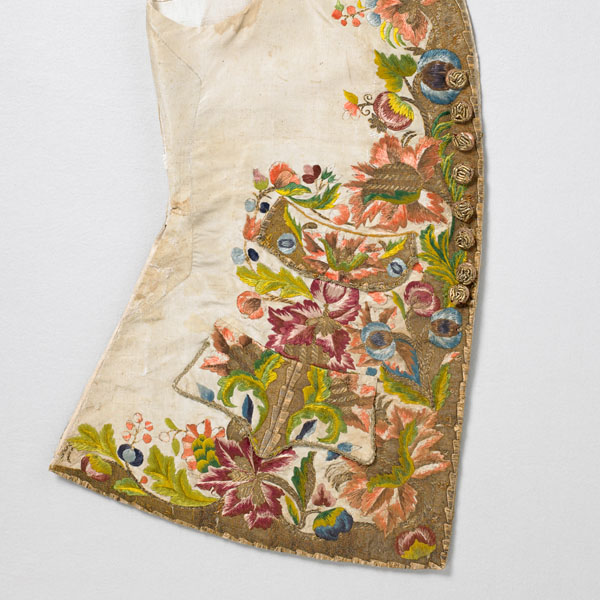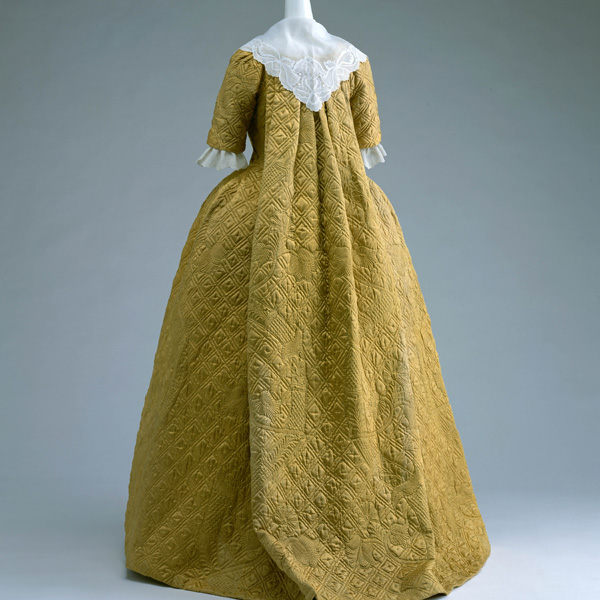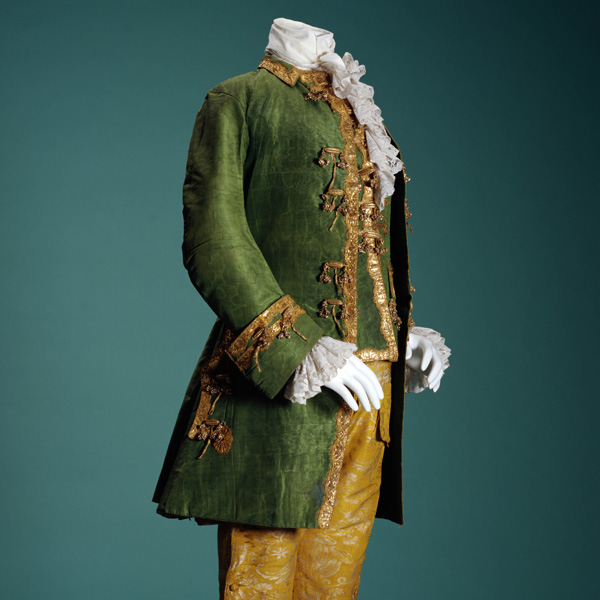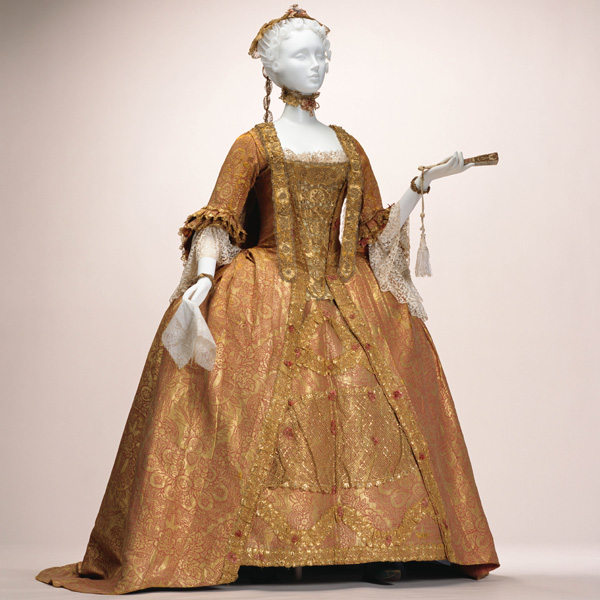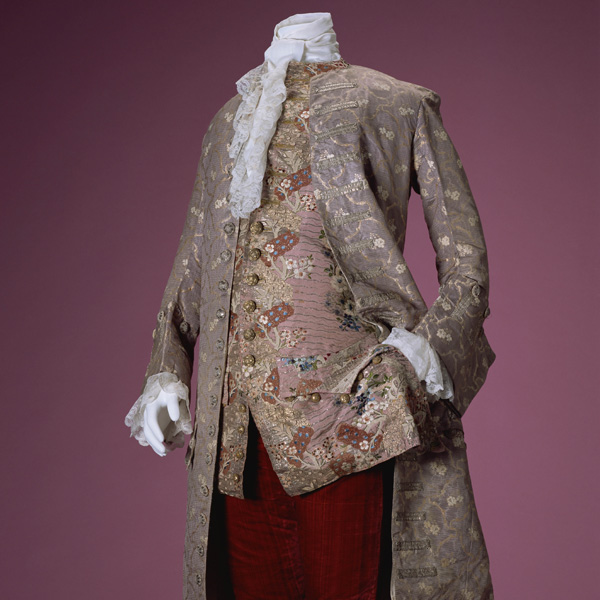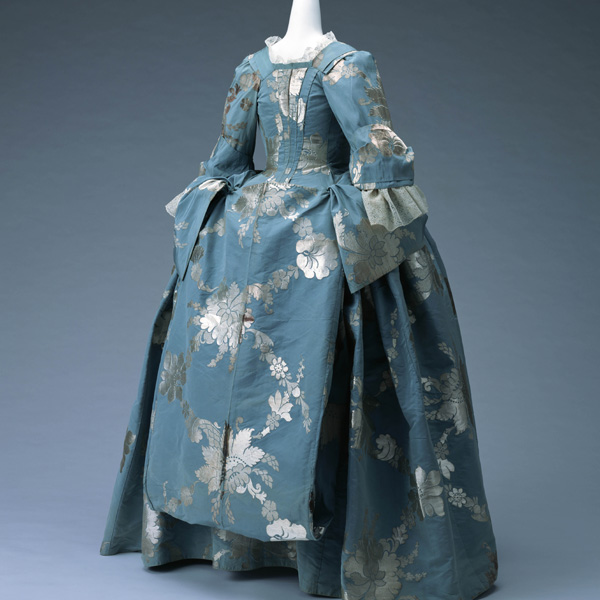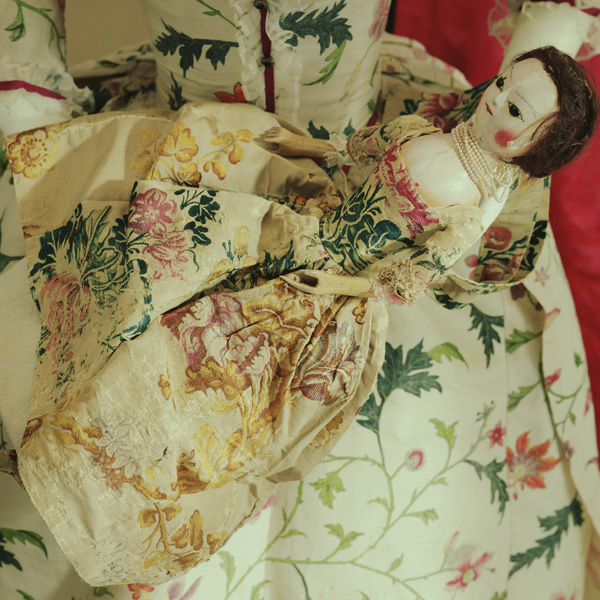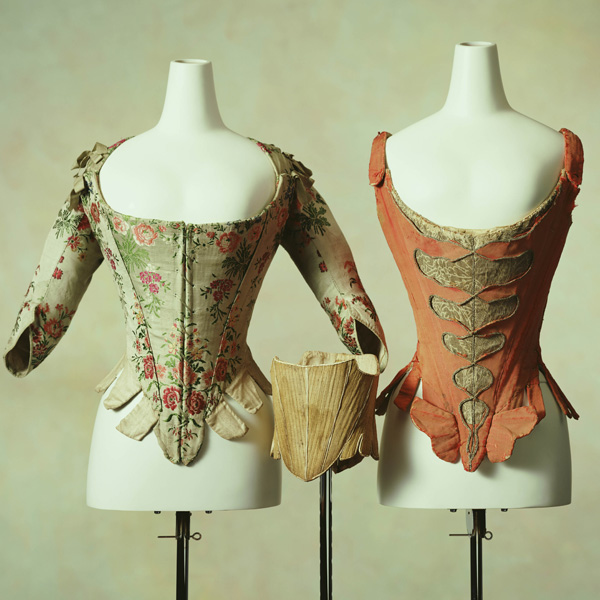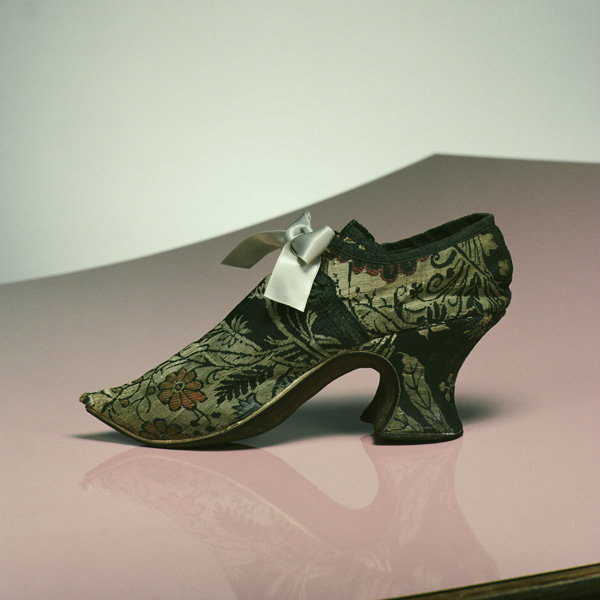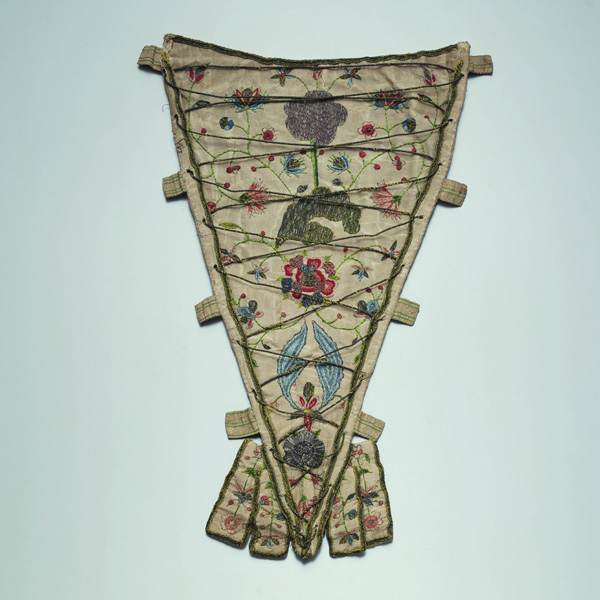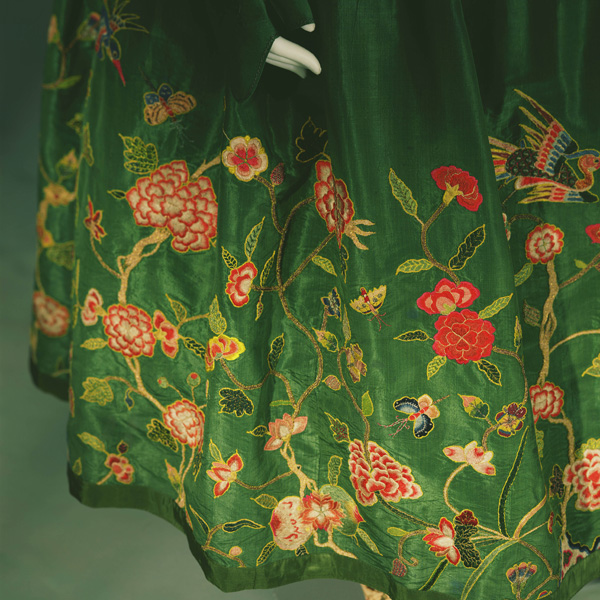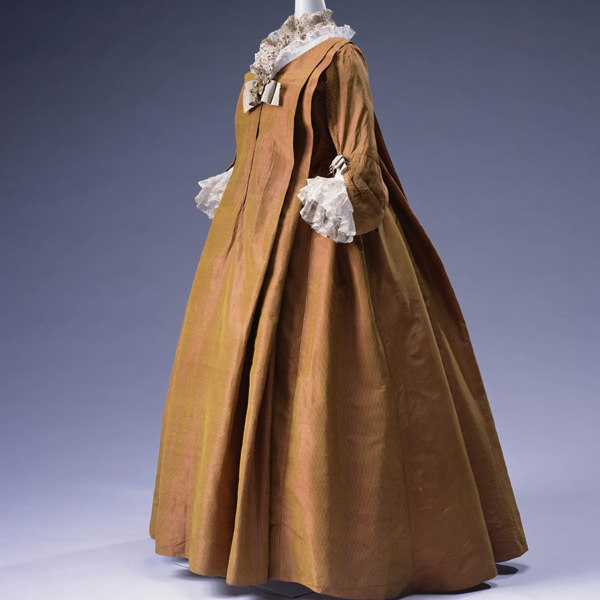![Corset [Left] Child's Corset [Center] Corset [Right]](https://www.kci.or.jp/archives/digital_archives/photos/1_xl_AC00224.jpg)
© The Kyoto Costume Institute, photo by Toru Kogure
You can enlarge by putting the mouse cursor on the image.
Corset [Left]
Child's Corset [Center]
Corset [Right]
c. 1760 - France? [Left]
Mid-18th century - America [Center]
Early 18th century - France [Right]
- Material
- Pale blue silk brocade with floral pattern; lacing at front and back; ribbon-tied sleeves; boned throughout. [Left]
Beige plain-weave linen with leather trim; boned throughout. [Center]
Orange silk faille with silver braid; back and side lacings; pocket at inside center front; boned throughout. [Right] - Inventory Number(s)
- AC224 77-11-64AD [Left]
AC6379 89-17-51 [Center]
AC9 77-5-2AC [Right]
Of kind of corsets worn underneath clothing for the body, there are simple ones for undergarments, and ornamented ones worn inside the home for relaxation. The latter type of corset also occasionally had sleeves attached. In France, the guild of tailors had been established since the medieval period, and their role was strictly regulated, and clothes-making was work of the man. Although women were given the ability to participate in clothes-making in 1675 (Diderot and D'Alembert, "Encyclopédie", 1770-78) and female dressmakers ("couturière") appeared, only male tailors were accepted as makers of men's clothing and women's court clothing, and corsets. Since a man's strong strength were needed in order to stitch whalebones, especially corsets were limited to male tailors.
 Digital Archives
Digital Archives